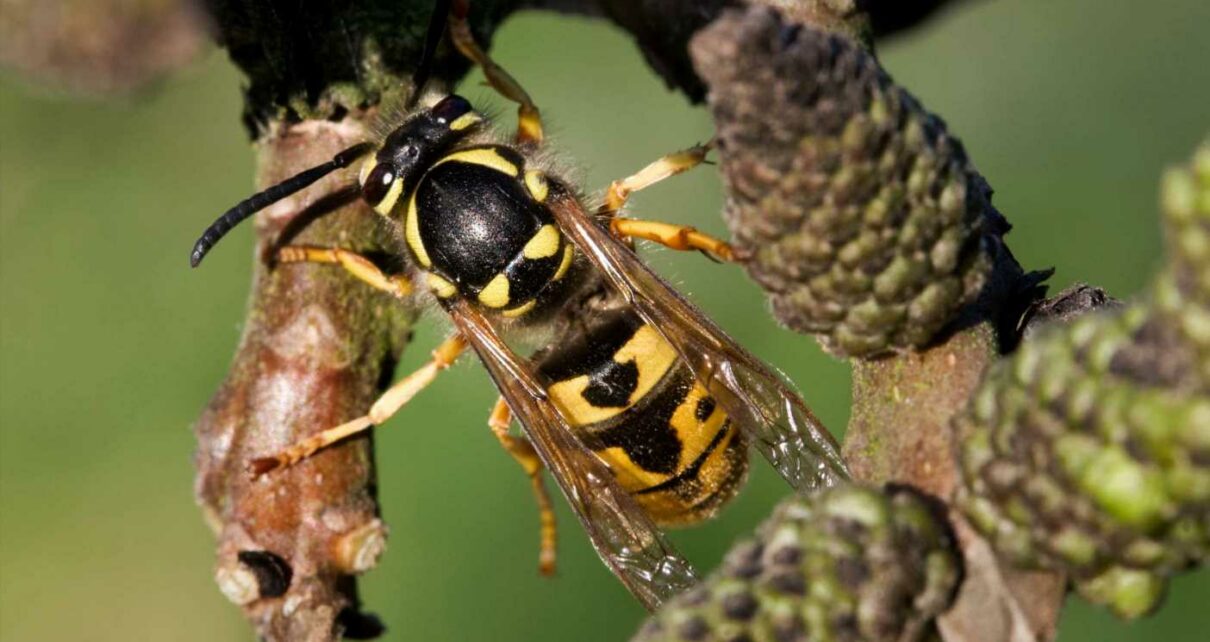GIANT wasps are on the rise because of the weather, experts warn.
Queen wasps — nearly twice the size of ordinary wasps — have surged in numbers after surviving the milder winter in Britain.
They have larger stings than their smaller counterparts, which cause searing pain.
In more severe cases, they can cause deadly anaphylactic shock in people who are allergic to them.
Dr Avinash Hari Narayanan, clinical lead at London Medical Laboratory, said: “More wasps mean it’s more likely that people will be stung.
“In turn, this increases the chances of severe allergic reactions or even, in rare cases, anaphylactic shock.”
Read more on allergies
Man left battling killer infection after using common allergy medication
Is my mouth problem caused by allergy? Dr Zoe Williams answers your questions
Anaphylaxis — a severe response to a trigger like wasps’ venom — occurs in up to 65 per cent of people who suffered a strong allergic reaction the last time they were stung.
It is caused by the body's immune system overreacting, and can be set off by allergies to anything from foods, like nuts or shellfish, to general anaesthetic.
Warning signs include feeling lightheaded or faint, difficulty breathing, a raised heartbeat, clammy skin and confusion or anxiety.
If someone is suffering from it, you should use an adrenaline auto-injector on them if they have one and you know how to use it, according to the NHS.
Most read in Health
My puppy chewed my big toe down to the bone but it might have saved my life
Patients wait over an hour-and-a-half for ambulance 999 calls to be ANSWERED
Spoonful of popular spread in morning can reduce stress
I lost all four limbs after getting caught in the steam machine at a gig
Ambulances should also be rung immediately and you should remove the sting from them if possible.
Anaphylactic shock from wasp or bee stings causes around nine deaths a year in the UK normally.
But Dr Narayanan warned the risks may be greater this year, with more wasps out looking for nests in April than any other month.
Queen wasps usually measure up to 2.5cm in length, whereas an ordinary worker wasp can be as little as 1.2cm long.
What are the symptoms of anapyhlactic shock?
Anaphylaxis usually develops suddenly and gets worse very quickly.
The symptoms include:
- feeling lightheaded or faint
- breathing difficulties – such as fast, shallow breathing
- wheezing
- a fast heartbeat
- clammy skin
- confusion and anxiety
- collapsing or losing consciousness
There may also be other allergy symptoms, including an itchy, raised rash (hives); feeling or being sick; swelling (angioedema) or stomach pain.
Source: The NHS
Dr Narayanan said: “Due to her relatively larger size, the queen wasp’s sting is a little bit bigger.
“However, it’s not considered more dangerous than that of the smaller worker wasp. For most of us, a wasp sting is painful but not fatal.
“However, an increasing number of UK adults, around 21.3million, now suffer from at least one allergy.
“That could mean they potentially develop anaphylactic shock.”
Allergy tests may be offered to you by your GP on the NHS or are also available privately at specialist clinics.
Source: Read Full Article









